Changing Displays Archive
Shakespeare's First Folio
22 and 23 April 2023
Hunterian Art Gallery
Sponsian: The Rediscovery of a Lost Roman Emperor
15 November 2022–26 March 2023
Hunterian Museum
Up to Snuff
21 March–17 July 2022
Hunterian Museum
A World Without Curling?
November 2021 - January 2022
Hunterian Museum
British Colonial Archaeology in the Near East
3 December 2019 - 9 March 2020
Kelvin Hall
Animal Skulls, Teeth and Beaks
September 2019 - March 2020
The Hunterian in the South
Magdeburg Hemispheres
14 January - 1 March 2020
Hunterian Museum
'Anarchy'? Coinage of King Stephen's Reign
17 September - 15 December 2019
Hunterian Museum
Waterloo
14 May - 15 September 2019
Hunterian Museum
Animal Skulls, Teeth and Beaks
November 2018 - September 2019
Kelvin Hall
Scottish Pottery
March 2018 - September 2019
The Hunterian in the South
The War To End All Wars?
9 November - 17 December 2018
Hunterian Museum
City of Glasgow Banknotes
From 11 July 2018
Hunterian Museum
Scottish Fossils
From June 2017
Kelvin Hall
Scottish Pottery
September 2016 - March 2017
Kelvin Hall
Admission free
Gold from Scotland
5 September 2017 - 7 January 2018
Hunterian Museum
Admission free
Mackintosh Architecture
From October 2016
The Hunterian in the South
Admission free
Alexander Stevens
29 November 2016 - 25 June 2017
Hunterian Museum
Admission free
 The Somme 1916
The Somme 1916
27 June – 16 October 2016
Hunterian Museum
Admission free
This display commemorates the centenary of one of the greatest battles of the First World War, the Battle of the Somme, fought from July to November 1916.
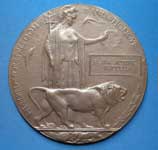 Since late 1914 there had been stalemate on the Western Front and the offensive was planned to break this. After eight days of constant bombardment British forces were ordered forward on 1st July. On that first day alone casualties were horrific. Britain sustained over 50,000 of whom almost 20,000 were killed. In contrast the Germans, in defensive positions, suffered some 6,000 dead and wounded. By the time the offensive ended on 18th November over one million men had been killed or wounded on all sides. The Allies had advanced a mere six miles.
Since late 1914 there had been stalemate on the Western Front and the offensive was planned to break this. After eight days of constant bombardment British forces were ordered forward on 1st July. On that first day alone casualties were horrific. Britain sustained over 50,000 of whom almost 20,000 were killed. In contrast the Germans, in defensive positions, suffered some 6,000 dead and wounded. By the time the offensive ended on 18th November over one million men had been killed or wounded on all sides. The Allies had advanced a mere six miles.
Many acts of bravery and heroism occurred. A young medical officer, John Boyd Orr, a University graduate and subsequently its Chancellor, won the Military Cross.
The 17 year son of another eminent Glasgow medical graduate, Frank Waddell, was killed on 1st July and in due course the family received his memorial plaque.
On display is a group of four medals, including the Military Cross, awarded to Lord Boyd Orr (1880-1971) and the First World War Memorial Plaque or ‘Dead Man’s Penny’ given to the family of Private Frank Waddell (1899-1916).
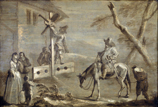 An Early Wall Painting by Hogarth?
An Early Wall Painting by Hogarth?
5 February - 24 June 2016
Hunterian Art Gallery
Admission free
New research suggests that the recently acquired painting displayed on the Spotlight wall is an early work by William Hogarth (1697–1764). Painted somewhere, in situ, on domestic pine panelling, it illustrates a scene from Samuel Butler’s satirical poem Hudibras; the same scene appears in Hogarth’s engraving Hudibras Triumphant. The significance of this research is far reaching.
If accepted, an oil painting will be added to Hogarth’s oeuvre which predates by some years his earliest known work, The Beggar’s Opera (1728). This painting, which the research dates to c.1724-6, reveals that in addition to working as an engraver, the young Hogarth made decorative paintings in patrons’ houses. Its style and monochrome tonality point to the influence of Sir James Thornhill, whose daughter Jane married Hogarth in 1729.
New Meteorites in The Hunterian
15 January - 26 June 2016
Hunterian Museum
Admission free
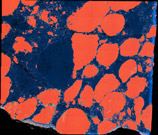 The Hunterian has an extensive collection of meteorites dating back to the beginning of the 19th century at the birth of meteorite science and the recognition of 'stones from space'.
The Hunterian has an extensive collection of meteorites dating back to the beginning of the 19th century at the birth of meteorite science and the recognition of 'stones from space'.
Meteorite research is a major strength at the University of Glasgow, and Hunterian specimens are regularly sampled for research, teaching and public engagement activities.
In 2014 we applied for a grant from the National Fund for Acquisitions to increase the research value of our meteorite collections. Thanks to this support, The Hunterian was able to purchase a number of rare and unusual meteorite specimens, helping to further meteorite science and public engagement.
This display shows three notable meteorite specimens we acquired last year.
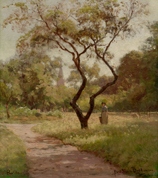 The Hague School and Scottish Art
The Hague School and Scottish Art
17 September 2015 - 31 January 2016
Hunterian Art Gallery
Admission free
Landscape at Rolde, Drenthe, at the heart of this spotlight display, celebrates the close connections in the mid to late 19th century between Scottish artists and The Hague School.
It was painted by Julius Bakhuyzen, a member of The Hague School. These artists shared with the Barbizon School and the French Realists the belief that art should be firmly rooted in reality, depicting actual landscapes and ordinary working people as seen here in works by two of The Hague School’s leaders, Josef Israels and Anton Mauve.
Such subjects struck a particular chord with Scottish artists and collectors, and from the 1870s a number of The Hague artists were invited to Scotland, where their work was exhibited. With a growing awareness of French Realist art, their visits influenced the work of a number of Scottish artists, from George Paul Chalmers to Robert Macgregor and William McTaggart. Examples of their works can be seen in the nearby Scottish Art displays.
The next generation of Scottish artists, and particularly the Glasgow Boys, were also receptive to Dutch and French Realism. Their distinctive Realist style is seen in the works displayed here by Paterson, Henry, Walton and Hornel.
Landscape at Rolde is one of two works lent by the Drents Museum, Assen, The Netherlands, in exchange for 26 works lent by The Hunterian to its exhibition, The Glasgow Boys–Pioneers of Scottish Painting, 20 September 2015–7 February 2016. The other loan is presented nearby in the Whistler Collection.
Glasgow Hero: The Medals of Colonel J L Dawson VC
From 13 October 2015
Hunterian Museum
Admission free
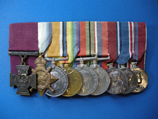 James Lennox Dawson was born in 1892 in Tillicoultry, grew up in Alloa, and when war broke out was teaching in Govan. He studied at the University of Glasgow at various times from 1910 but did not graduate, in science, until 1920.
James Lennox Dawson was born in 1892 in Tillicoultry, grew up in Alloa, and when war broke out was teaching in Govan. He studied at the University of Glasgow at various times from 1910 but did not graduate, in science, until 1920.
Corporal Dawson gained his Victoria Cross in France in 1915 and received his medal from King George V at Buckingham Palace in December 1916.
In 1921 Dawson was commissioned into the Army Education Corps but during service in India transferred to the Indian Army Ordnance Corps. During the Second World War he was a Liasion Officer in Washington.
After Independence in 1947 Colonel Dawson assisted in the transfer of the Indian Army to the new government and then retired to Eastbourne where he died in 1967.
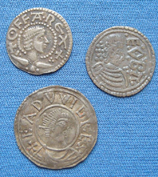 Queen among Kings
Queen among Kings
Anglo-Saxon coins from William Hunter’s Coin Cabinet
From 2 August 2015
Hunterian Museum
Admission free
Doctor William Hunter put together one of the finest coin cabinets between 1770 and his death in 1783. It surpassed the great aristocratic collections of eighteenth century Britain, including King George III’s, and was second only to that of the French king. It was bequeathed to the University of Glasgow where it remains one of the world’s great coin collections.
The cabinet includes almost 800 Anglo-Saxon coins, from the seventh century to the Norman Conquest of 1066, which belonged to Hunter. They constitute an extremely rare survival of an intact eighteenth century collection of the Anglo-Saxon coinage.
A feature of Hunter’s coin collecting was his preference for buying complete collections which he then integrated with his own. Unfortunately he did not keep a record of previous owners or sources. A few entries in his account book refer generally to the purchase of Saxon coins. Only one is more specific. On June 17th 1780 he paid five guineas for ‘A Saxon Queen’. This is the penny of Offa’s wife Cynethrith, the only appearance of a consort on the British coinage until modern times.
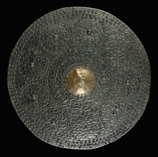 Highland Targaid or Targe
Highland Targaid or Targe
From 26 May 2015
Hunterian Museum
Admission free
This is the earliest datable specimen of a targaid or targe, the round shield used in early modern Gaelic Scotland down to Culloden, in conjunction with a firearm and one-handed sword.
These shields were often richly decorated prestige items, and the subject of vivid poetic description. This rare example is made from wood, leather and metal and was presented to The Hunterian in 1913 by an unknown donor.
The central boss bears the date 1623, and the initials ‘DMK’. The likely owner was Sir Donald MacKay, chief of his name, peer of the realm, adulterer and bigamist.
Along with many others of his surname he saw military service in the Thirty Years War (1618-48). In 1632 the High Court of Chivalry decreed that he and his legal antagonist should settle their differences by judicial combat, but this decision was annulled by Charles I.
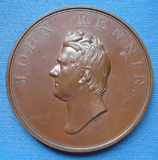 Harbours, Bridges and Canals
Harbours, Bridges and Canals
From 3 February 2015
Hunterian Museum
Admission free
John Rennie (1761-1821) was born in East Lothian and became one of Britain’s most distinguished civil engineers. A number of medals record his portrait and achievements. These range from the Crinan Canal in Scotland to Waterloo Bridge in London and Dunleary Harbour in Ireland. The National Fund for Acquisitions has recently enabled The Hunterian to add this one to its group of Rennie medals.
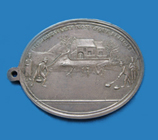 1806 Curling Medal
1806 Curling Medal
1 October 2014 – 25 January 2015
Hunterian Museum
Admission free
Curling is one of Scotland’s most popular winter sports. This ancient pastime took place on frozen lochs and by the 19th century, on artificial ice rinks. Among the earliest curling clubs is the Duddingston Curling Society, founded in 1795. It soon produced a medal which provided a model for many other clubs. An early example, dated 1806, has recently been added to The Hunterian collection and is now on display.
Dutch and Flemish Landscape Prints 1513 - 1650
17 September 2015 - 13 March 2016
Hunterian Art Gallery
Admission free
‘In Flanders they paint only to deceive the external eye, things that gladden you... They paint stuffs and masonry, the green grass of the fields, the shadow of trees, and rivers and bridges, which they call landscapes'.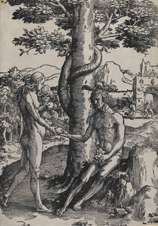
It was Michelangelo that identified Flemish artists as the first experts in the art of landscape. Prints were cheap and found on sale in Italy soon after they were made in Antwerp or in Leiden. In earlier religious and portrait painting, landscape elements provided decorative and allegorical elements. However, in direct response to Reformation teaching, landscape developed into a separate branch of art, reaching its highpoint in about 1650 in the work of Rembrandt and his contemporaries.
This small display of 15 landscape prints ranges from a Biblical woodcut of 1513 by Lucas van Leyden, via Rubens, to some very freely made etchings by Jan Both, Paul Potter and Herman van Swanevelt. The star works are three etchings of c.1650, set in oak thickets, by Jacob van Ruisdael. Ruisdael is famous as a painter, but like numerous 17th century Dutch artists, he made a few prints to supplement his income.
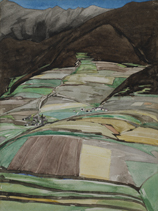 William Davidson: Art Collector
William Davidson: Art Collector
18 July 2014 – 4 January 2015
Hunterian Art Gallery
Admission free
William Davidson (1861–1945) was one of Charles Rennie Mackintosh’s most important patrons. As well as commissioning Mackintosh’s first important house, Windyhill, he provided financial support during the lean years in London, co-organised the Mackintosh Memorial Exhibition in Glasgow in 1933, and was instrumental both in the safeguarding of the Mackintoshes’ Estate of drawings, designs and archival material – now held at The Hunterian, and in the preservation of the interiors of the Mackintoshes’ Glasgow home – now reassembled here as The Mackintosh House.
Davidson was a successful Glasgow-based produce broker and commission merchant, active in the profession and in civic life. A cultured and reserved man, he was a talented musician, keen amateur photographer, and collector of contemporary Scottish painting. His extensive art collection came to include work by 'The Four' (Mackintosh, Margaret Macdonald, Frances Macdonald and J. Herbert McNair); Glasgow Boy painters George Henry, E. A. Walton, E. A. Hornel, David Gauld, and W. Y. McGregor; and the Scottish Colourists. In particular he was a loyal supporter of John Quinton Pringle.
This selection of gifts, bequests and loans from the Davidson family richly illustrates the scope of his collection and the Davidson family’s continuing support of the Mackintosh legacy.
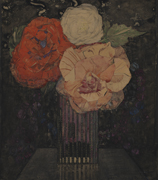 Charles Rennie Mackintosh: Begonias
Charles Rennie Mackintosh: Begonias
18 July 2014 – 4 January 2015
Hunterian Art Gallery
Admission free
During the years he spent in London, from 1915 to 1923, Mackintosh painted a small group of still-life compositions in watercolour, and produced a group of vibrant textile designs. This work helped to fill the vacuum caused by the dissolution of his architectural practice at the end of 1913 and the restrictions on new building which followed the outbreak of the First World War in 1914.
Begonias is one of the finest of the London still-lives. These compositions and the textile designs are closely related. Both drew on Mackintosh’s lifelong study of plant forms, which most recently included a series of exquisite botanical studies painted during an extended visit to Walberswick on the Suffolk coast, from 1914 to 1915.
Begonias was acquired by Mackintosh’s client and friend, William Davidson in 1919, in response to a plea from Mackintosh for financial support. It has been generously loaned by a family descendant and is a promised bequest to The Hunterian.
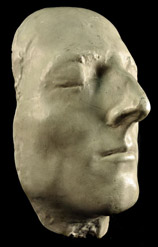 Death Mask of Bonnie Prince Charlie
Death Mask of Bonnie Prince Charlie
20 December 2013 - 28 February 2014
Hunterian Museum
Charles Edward Stuart (1720 - 1788), ‘The Young Pretender’ or ‘Bonnie Prince Charlie’, was born and brought up in Rome.
Trained for the ultimate goal of reclaiming the British throne, he landed in Scotland in 1745, raising his standard at Glenfinnan. A number of Highland clans rallied to his cause but in 1746 his army was finally defeated at Culloden Moor.
Charles escaped and was hunted as a fugitive for more than five months. The loyal Highlanders never betrayed him and one, Flora Macdonald, famously helped him to escape from the English disguised as her maid.
In exile Charles became a lonely, drunken old man, abandoned by his wife and with no legitimate heir. This death mask was made on his death in Rome in 1788.
Scottish Landscapes
28 October 2013 - 22 June 2014
Hunterian Art Gallery
An opportunity to see recently acquired and rarely exhibited landscape paintings and studies by some of the most celebrated Scottish painters including David Wilkie, Alexander Nasmyth and Horatio McCulloch.
Featuring eight works in total, the display centres on Andrew Wilson’s ‘River Scene’ and Alexander Fraser’s ‘Study for Bothwell Castle’. Both were gifted to The Hunterian by Professor Roderick Campbell and have recently undergone conservation work.
The display illustrates trends in early 19th century Scottish landscape painting, the importance of outdoor sketching expeditions and the growing popularity of landscapes with historical, literary and romantic associations, from ruined castles to dramatic Highland views.
Reynolds in Black and White
13 September 2013 - 5 January 2014
Hunterian Art Gallery
Celebrity portraits by leading eighteenth-century artists were popularised through engravings. To complement our major exhibition on Allan Ramsay, this display of mezzotints by some of the greatest practitioners of the art explores the prints made after portraits by Ramsay's great contemporary, Sir Joshua Reynolds (1723-1792).
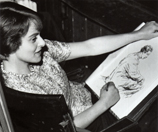 Milein Cosman
Milein Cosman
Until July 2014
Hunterian Art Gallery
This display of prints and drawings by Milein Cosman coincides with an exhibition in her birthplace, Gotha in Germany.
Cosman’s Jewish family sent her away to school in Switzerland to protect her from the Nazis. In 1939, the Cosman family emigrated to England, settling in Oxford where Milein attended the Slade School of Art.
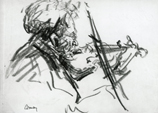 Over the course of a long working life the artist produced thousands of drawings including many commercial illustrations. Two very personal works are included in the display, both portraits of figures from the artist’s circle of European émigrés: ‘Oskar Adler Playing the Violin, c. 1949’ and ‘Henriette von Motesiczky, c.1960’.
Over the course of a long working life the artist produced thousands of drawings including many commercial illustrations. Two very personal works are included in the display, both portraits of figures from the artist’s circle of European émigrés: ‘Oskar Adler Playing the Violin, c. 1949’ and ‘Henriette von Motesiczky, c.1960’.
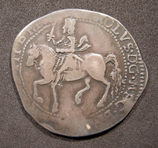 Rare Civil War Acquisition
Rare Civil War Acquisition
Until 28 September 2014
Hunterian Museum
This recent acquisition is an extremely rare silver half crown of Charles I, issued during the English Civil War. Fearing for the safety of his family, Charles had left London and set up his court at Oxford. In abandoning London, he also abandoned the Royal Mint, then known as Tower Mint and located in the Tower of London. This coin was minted at Hartlebury Castle near Worcester at a time when the castle’s defences were being refurbished. The emblem of pears on both sides of the coin are unique to Hartlebury coins but also appear on the arms of Bishops of Worcester who owned the castle.
Lord Stewartby's Coin Cabinet
25 January–20 March 2022
Hunterian Museum

